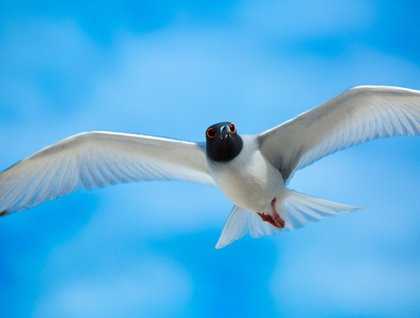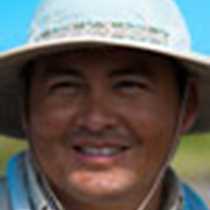It is the last day of our voyage in the Galapagos archipelago and we are still constantly amazed by the wildlife of this astonishing place. During the night we crossed the equatorial line, heading toward Genovesa (also known as Tower Island). This place is an ancient dormant volcano and its submerged caldera serves as an anchorage for ships visiting the Galapagos.
This morning we awoke to an overwhelming number of seabirds leaving the island heading offshore to their fishing grounds. To take advantage of this sight, an early morning outing in kayaks was offered. Along the rim of the volcano, frigatebirds and boobies were spotted perched on rocks and trees. Tropicbirds trying to land on the steep cliff delighted us with their harmonious but strange sounds.
Later on, after breakfast, all of us landed at Darwin’s Bay on a small beach made of coral rubble. On our walk we spotted frigatebirds, red-footed boobies, Nazca boobies, swallow-tailed gulls, Darwin finches and mockingbirds.
The underwater realm was also captivating this morning. The ocean was warm and calm in the selected area for snorkeling. Our guests swam among fur sea lions, Galapagos sea lions, white-tipped sharks, and a mosaic of tropical fish.
In the afternoon, our last outing took us to Prince Phillip’s Steps. The excursion began as a simple hike trough a deciduous forest. The bursera or palo santo forest dominates the landscape, providing nesting material and habitat for red-footed and Nazca boobies. The end of the path took us to a rusted lava field. Tropicbirds and storm petrels soared over the field while short-eared owls waited patiently for prey.
At the end of the outing we took kayaks and paddled back to the National Geographic Islander while the sun set on the horizon.









